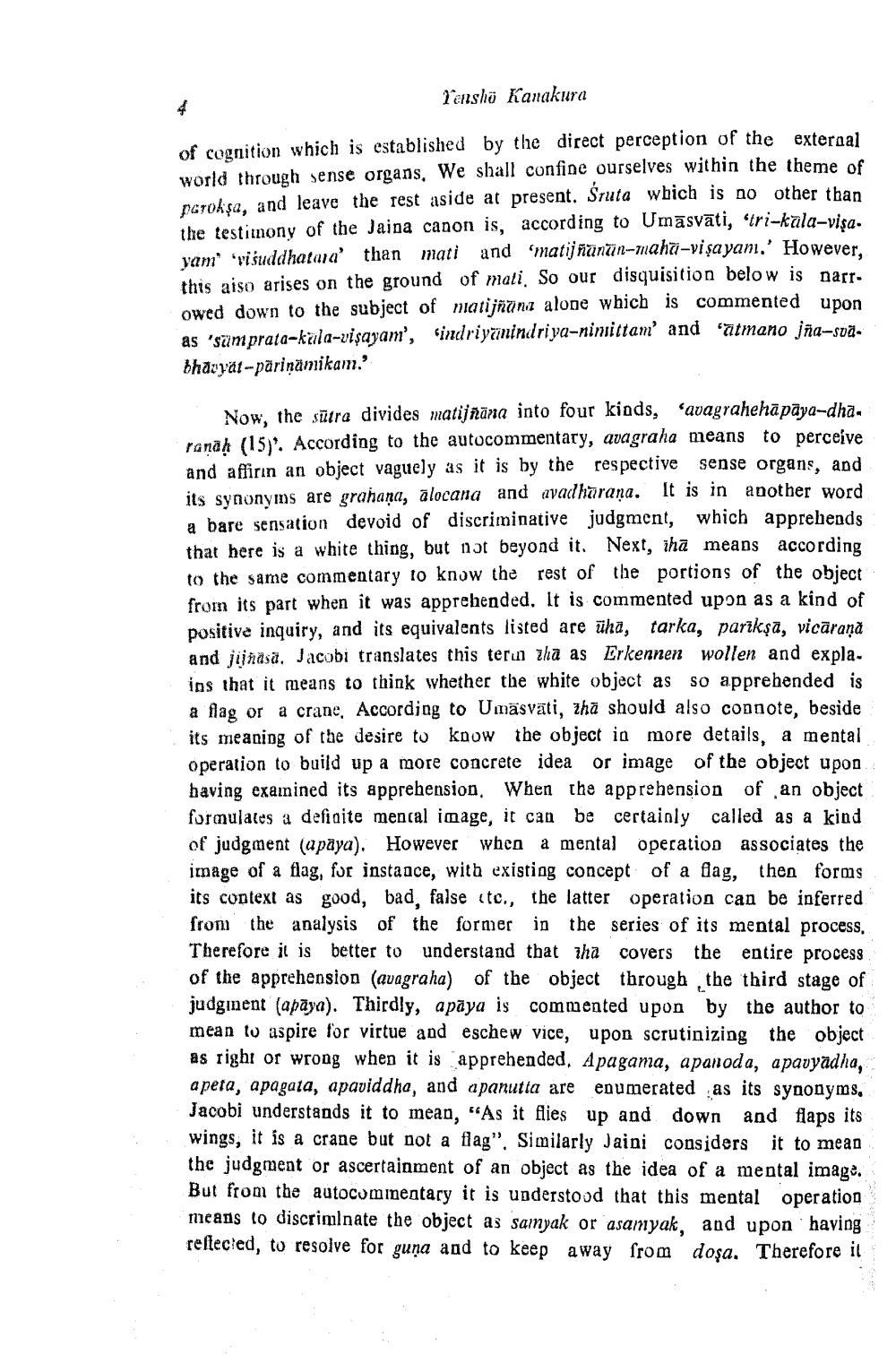________________
Tenshi Kanakura
of cognition which is established by the direct perception of the external world through sense organs, We shall confine ourselves within the theme of parokşa, and leave the rest aside at present. Sruta which is no other than the testimony of the Jaina canon is, according to Umāsvāti, tri-kala-visa. yama visuddhatara' than mati and 'matij ñanan-maha-vişayam.' However, this aiso arises on the ground of mati. So our disquisition below is narrowed down to the subject of matijñünz alone which is commented upon as 'samprata-kala-visayam', (indriyaniniriya-niniittam' and 'atmano iña-ma. bhavyät-pārinamikam.'
Now, the sūtra divides matijnana into four kinds, Savagrahehāpāya-dha. ranah (15)'. According to the autocommentary, avagraha means to perceive and affirin an object vaguely as it is by the respective sense organs, and its synonyms are grahana, alocana and avadharana. It is in another word a bare sensation devoid of discriminative judgment, which apprehends that here is a white thing, but not beyond it. Next, iha means according to the same commentary to know the rest of the portions of the object from its part when it was apprehended. It is commented upon as a kind of positive inquiry, and its equivalents listed are üha, tarka, parikşa, vicārană and jijñasä. Jacobi translates this teru zha as Erkennen wollen and expla. ins that it means to think whether the white object as so apprehended is a flag or a crane. According to Umäsväti, cha should also connote, beside its meaning of the desire to know the object in more details, a mental operation to build up a more concrete idea or image of the object upon having examined its apprehension. When the apprehension of an object formulates a definite mencal image, it can be certainly called as a kind of judgment (apaya). However when a mental operation associates the image of a flag, for instance, with existing concept of a flag, then forms its context as good, bad, false etc., the latter operation can be inferred from the analysis of the former in the series of its mental process, Therefore it is better to understand that iha covers the entire process of the apprehension (avagraha) of the object through the third stage of judgment (apāya). Thirdly, apāya is commented upon by the author to mean to aspire for virtue and eschew vice, upon scrutinizing the object as right or wrong when it is apprehended. Apagama, apanoda, apavyadha, apeta, apagata, apaviddha, and apanutta are enumerated as its synonyms, Jacobi understands it to mean, "As it flies up and down and flaps its wings, it is a crane but not a flag". Similarly Jaini considers it to mean the judgment or ascertainment of an object as the idea of a mental image. But from the autocommentary it is understood that this mental operation means to discriminate the object as samyak or asamyak, and upon having reflected, to resolve for guna and to keep away from dosa. Therefore il




